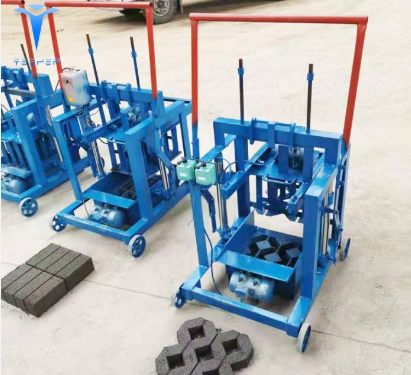A manual brick making machine can contribute to sustainable and environmentally friendly brick production practices in several ways:
- Utilization of Local Materials: Manual brick making machines can often utilize locally available materials such as clay, soil, sand, and other natural resources, reducing the need for transportation and minimizing the environmental impact associated with sourcing raw materials from distant locations.
- Reduced Energy Consumption: Unlike automated brick making machines that require significant energy inputs for operation, manual brick making machines are typically operated manually or with minimal mechanical assistance, resulting in lower energy consumption and reduced reliance on fossil fuels or electricity.
- Minimal Carbon Footprint: Manual brick making machines produce bricks using simple mechanical processes that generate minimal greenhouse gas emissions. By avoiding the use of heavy machinery and industrial processes, manual brick production can help reduce the carbon footprint associated with brick manufacturing.
- Less Waste Generation: Manual brick making machines produce bricks on demand, allowing for precise control over production quantities and minimizing excess inventory and waste. Additionally, manual brick production methods often involve recycling or reusing waste materials, such as excess clay or soil, further reducing waste generation and promoting resource efficiency.
- Promotion of Local Economy: Manual brick making machines are often operated by local artisans or small-scale entrepreneurs, providing employment opportunities and supporting local economies. By investing in manual brick production, manual brick making machine communities can create sustainable livelihoods while reducing reliance on imported building materials and machinery.
- Adaptability to Local Conditions: Manual brick making machines can be easily customized or adapted to suit local building traditions, construction techniques, and environmental conditions. This flexibility allows for the production of bricks that meet local quality standards and regulatory requirements, ensuring compatibility with regional construction practices and preferences.
- Encouragement of Sustainable Building Practices: Manual brick production promotes the use of natural, locally sourced materials and traditional construction methods, which align with principles of sustainable building and architecture. Bricks produced using manual methods are often valued for their durability, thermal insulation properties, and aesthetic appeal, contributing to the long-term sustainability of built environments.
- Community Engagement and Empowerment: Manual brick making can involve community participation and collaboration, fostering a sense of ownership, pride, and responsibility among local residents. By involving community members in the production process, manual brick making initiatives can promote environmental awareness, conservation efforts, and sustainable development goals.
Overall, manual brick making machines offer a sustainable and environmentally friendly approach to brick production by utilizing local materials, minimizing energy consumption, reducing waste generation, supporting local economies, promoting sustainable building practices, and fostering community engagement and empowerment. By embracing manual brick production methods, builders, developers, and communities can contribute to a more sustainable and resilient built environment for future generations.
